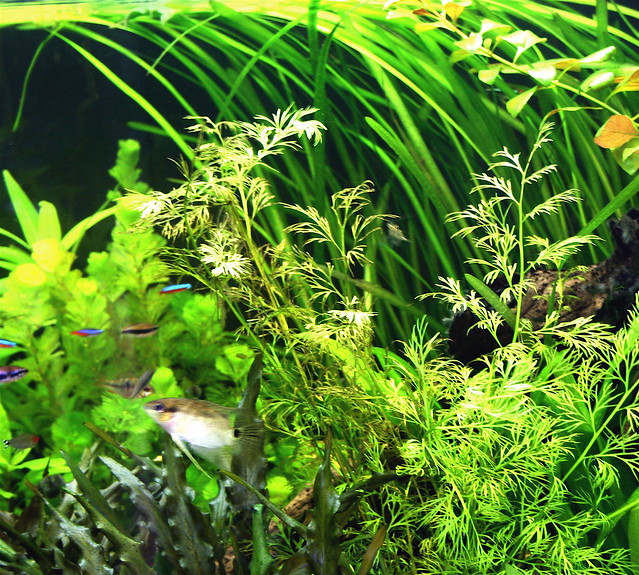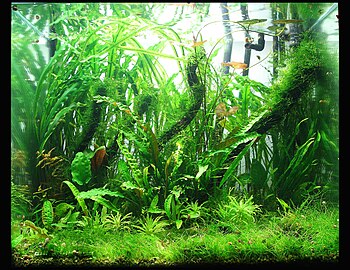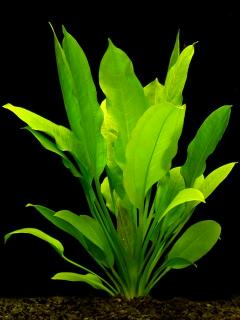 |
| Photo by The Wandering Angel |
Floaters
Floaters are a common choice in aquariums because they add that style and elegance aside from the balance that they provide in the entire aquarium. Floaters, as the name suggests, thrive at the surface of the aquarium with their roots "floating" in the water, and are, by technical name, floating plants. One good example of a floater is the Fairy Moss.
Rhizomes
These plants are commonly described as having thick stems that stretch out inside the fish tank horizontally, with the leaves sprouting evenly at the stem. They are made to "run" over the substrate, much like how a normal plant grows on land. The Anubias and the African Fern are the commonly used rhizomes for aquariums. Aquarists start growing these plants by attaching them to the driftwood, and they spread along the substrate all by themselves.
Rosettes
These plants are characterized as looking like crowns, with roots that grow underneath them. These kinds of plants are very ornamental for a freshwater aquarium plant because they present a shortened stem axis that tends to spread over its leaves beautifully. The downside is that they tend to need a good amount of maintenance and care. Some good examples of Rosettes are the Amazon Sword and the Sagittaria.
Stems
They are called this way because of their general appearance, which basically looks like a stem that is firmly rooted in the substrate. The leaves that can come in paired and multiple varieties are found at the stem's nodes
Other Notable Aquatic Plants
The Java moss may well be considered as one of the most common aquatic plants. This is because it has a high tolerance rate for varying water pH levels, and can grow relatively fast, which makes it the ideal plant for beginners.
The Water Wisteria is a plant that can also grow quite quickly. It is a good plant to use in aquariums because aside from its aesthetic function as a plant, it also helps to keep the algae levels of the aquarium low. Be careful of the water nutrient sucking capability of this plant, though.
Cryptocoryne Becketti is a plant that can pose a challenge to the more experienced hobbyist. It is an amphibious plant, meaning it can grow well regardless if it is on land or underwater (but for its underwater survivability purposes, we shall still call this an aquatic plant). Like Rosettes, it's a very good ornamental plant, as it gives a dazzling array of different colors, but it only works for those who are able to raise it well.
|


















